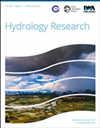中国年降水量时空变化及其对ENSO的响应
IF 2.4
4区 环境科学与生态学
Q2 Environmental Science
引用次数: 0
摘要
结果表明:20世纪30年代中期以前,研究区降水主要呈下降趋势,之后呈上升趋势;20世纪50年代降水总体呈西升东降的分布,这种趋势一直持续到21世纪初。到2007年,除大陆盆地中部外,整体趋势以上升为主。本次研究共发现65个El Niño/La Niña南方涛动(ENSO)事件,其中El Niño事件24个,La Niña事件41个。ENSO发生时降水总体偏少。然而,在事件的类型和强度方面存在差异。例如,El Niño对降水的影响大于La Niña,极强或较强El Niño/La Niña事件对降水的影响大于中等、较弱或极弱事件。降水与El Niño或La Niña事件的相关性既有相似之处,也有差异。例如,降水主要与El Niño和La Niña同时呈负相关,且均与强度成正比,但降水与El Niño的相关性显著强于La Niña。本文章由计算机程序翻译,如有差异,请以英文原文为准。
Spatio-temporal variation of annual precipitation in China and its response to ENSO
The results showed that the precipitation in the study area was mainly in a downward trend before the mid-1930s, and then turned upward. In the 1950s, the precipitation generally showed a distribution of rising in the west and falling in the east, and this trend continued until the early 21st century. By 2007, except for the central part of the Continental Basin, the overall trend was mainly upward. In this study, 65 El Niño/La Niña Southern Oscillation (ENSO) events were identified, including 24 El Niño events and 41 La Niña events. The precipitation was generally less when ENSO occurred. However, there were differences in the type and intensity of the event. For example, El Niño had a greater impact on precipitation than La Niña did, and extremely strong or strong El Niño/La Niña events had a more significant impact than moderate, weak, or extremely weak ones. The correlation between precipitation and El Niño or La Niña events had some similarities and differences. For example, precipitation was mainly negatively correlated with El Niño and La Niña at the same time, and both correlations were proportional to intensity, but the correlation between precipitation and El Niño was significantly stronger than that of La Niña.
求助全文
通过发布文献求助,成功后即可免费获取论文全文。
去求助
来源期刊

Hydrology Research
Environmental Science-Water Science and Technology
CiteScore
5.30
自引率
7.40%
发文量
70
审稿时长
17 weeks
期刊介绍:
Hydrology Research provides international coverage on all aspects of hydrology in its widest sense, and welcomes the submission of papers from across the subject. While emphasis is placed on studies of the hydrological cycle, the Journal also covers the physics and chemistry of water. Hydrology Research is intended to be a link between basic hydrological research and the practical application of scientific results within the broad field of water management.
 求助内容:
求助内容: 应助结果提醒方式:
应助结果提醒方式:


